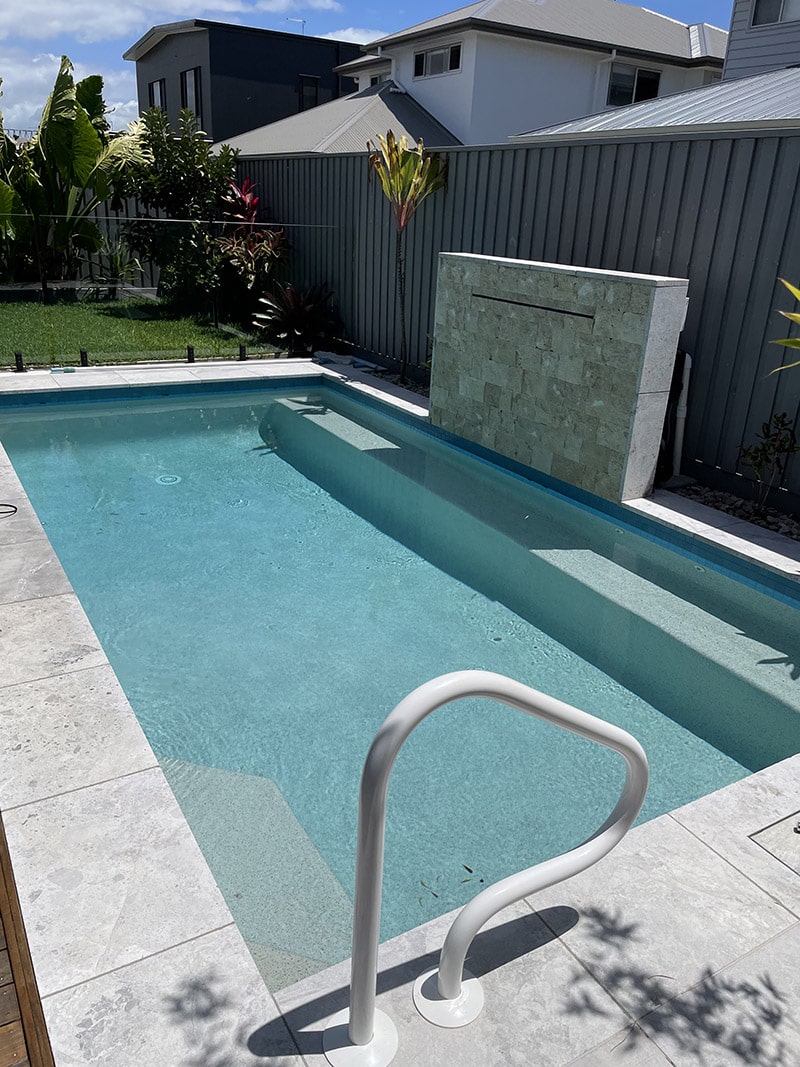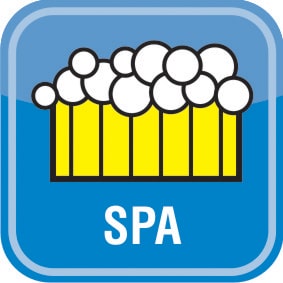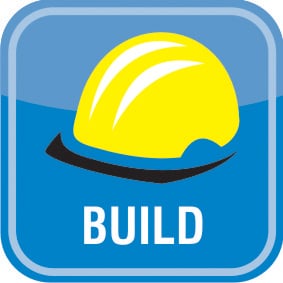Aftercare
How to Look after new pool interior
Test the pool water, and balance to the recommended levels:
- pH 7.2 – 7.6 (Ideal 7.4)
- Total Alkalinity (TA) 100 – 200ppm (Ideal120)
- Calcium Hardness (CH) 200 – 300ppm *(Ideal 250)*
*Calcium levels will increase as the product cures
DO NOT add calcium for at least four weeks and then ONLY if required.
Weekly Maintenance
- Brush walls and floor of pool to remove chemical and mineral residue.
- Test pH every day and balance as required.
- Clean your filter (at end of week 2)
- Test pH every other day and balance as required.
- Test pH twice a week and balance as required.
- Clean your filter (at end of week 5)
- Test pH twice a week and balance as required.
How to test your water using a 4 in 1 test kit
- Test your pH and Chlorine levels once a week
- Take a sample to your local pool shop once a month at least to test the water
How to Water Test – Chlorine
- Fill CL Tube with pool water
- Without touching the tablet, drop one DPD #1 tablet into the tube.
- Place cap on tube and invert several times until tablet dissolves.
- Compare tube colour with adjacent colour standard. Aim for 1.5 – 2.0 ppm.
- If Chlorine level is high, reduce your chlorine output or runtime
- If your chorine level is low, increase your chlorine output or runtime.

How to Water Test – pH
- Fill large tube to pH mark with pool water
- Ad 2 drops of solution #4, swirl to mix
- Add 5 drops f solution #2, swirl to mix
- Compare the tube colour with adjacent colour, if pH is HIGH follow the next step
- Add solution #3, one drop at a time, swirling in between drops
- Count drops needed to change colour to nearly match pH colour standard.
- Refer to the chart to add required amount of acid.
TO DECREASE PH USING ACID
Base Demand Reagent
1 Drop
2 Drops
3 Drops
4 Drops
5 Drops
Base Demand Reagent
1 Drop
2 Drops
3 Drops
4 Drops
5 Drops
Base Demand Reagent
1 Drop
2 Drops
3 Drops
4 Drops
5 Drops
Base Demand Reagent
1 Drop
2 Drops
3 Drops
4 Drops
5 Drops
Base Demand Reagent
1 Drop
2 Drops
3 Drops
4 Drops
5 Drops
Base Demand Reagent
1 Drop
2 Drops
3 Drops
4 Drops
5 Drops
How to Water Test – Total Alkalinity (TA)
- Fill large tube to total alkalinity test line with pool water
- Add 2 drops of solution #4 and swirl to mix
- Add 2 drops of solution #5 and swirl to mix
- Add solution #3 one drop at a time, swirl between drops
- Count and remember how many drops you’ve put in
- Multiply the number of drops x 10 to obtain your reading (i.e 10 x drops = 100ppm, 7 x drops = 70)
RAISE TOTAL ALKALINITY USING pH BUFFER
Increase Pool Volume







